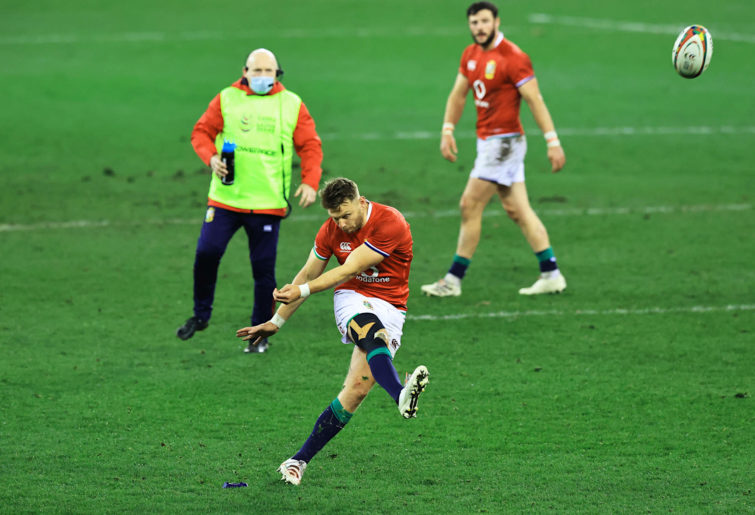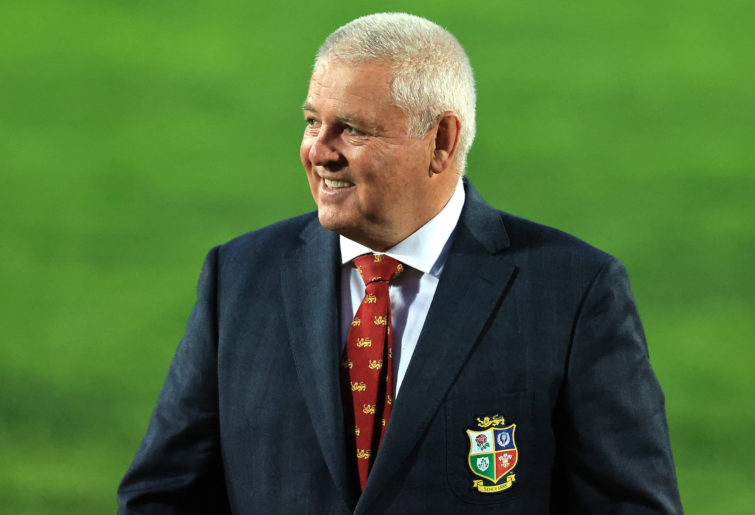At the time, it seemed like such an innocuous run, but the more the British and Irish Lions came back in the first Test against South Africa, the more I kept thinking about it.
And not thinking of it as a turning point per se, but rather the best indication of just how much momentum had swung the Lions’ way in the second half in Cape Town.
From an Ali Price box kick inside the Lions’ 22, winger Duhan van der Merwe had chased through superbly to the point of being able to contest the catch with Springboks number eight Kwagga Smith, so much so that van der Merwe was able to bunt the ball backwards toward his chasing supports.
Back-rower Tom Curry had also got through to the contest to pressure Smith, but alongside fresh try-scorer Luke Cowan-Dickie was barnstorming blindsider Courtney Lawes, who pulled the ball in cleanly with his outstretched right hand and set off.
From the ten-metre line, Lawes suddenly looked up to see no defenders in front of him, and it was near halfway when his big left hand made short work of Springboks fullback Willie le Roux.
Five or six metres into South African territory, Pieter-Steph du Toit got a hand on a Lawes boot to somewhat slow him down, but it wouldn’t be until several metres beyond the Springboks’ ten-metre line before Siya Kolisi was able to bring him to ground.
The Lions went wide to the right and found space, with fullback Stuart Hogg getting the ball to the Boks’ 22, and the Lions would play another dozen phases to the left and back right before winning the penalty advantage, from which Dan Biggar would ultimately bring them back to within a point with around 24 minutes on the clock.

(Photo by David Rogers/Getty Images)
They would take the lead in the 63rd minute, and the rest of the match is history.
Lawes ran for 33 metres for the match, with that one run easily accounting for 25 of those. He and number eight Jack Conan were the Lions’ standout ball carriers, with Lawes getting a couple of offloads away as well. Defensively they got through a mountain of work between them, and were right up there with the best red jerseys on the field.
The Lions’ fortunes seemed to change from the second-half restart and after a couple of excellent mauls, Cowan-Dickie bagged the first try of the Test series in the 44th minute.
By the time of Lawes’ aforementioned run, the Lions were carrying with purpose, had the breakdown in control, and were already determining where the game was being played and on whose terms, courtesy of a kick-chase that was already producing results.
It felt at this stage – to me, at least – that a Lions lead was inevitable.

(Photo by Getty Sports)
And by this stage, the Lions were already playing the most rugby. The Springboks’ attacking raids were really only coming from play breaking down. In the case of Faf de Klerk’s try, a Handre Pollard pass flew a long way behind the intended recipient and another 25 metres back downfield before du Toit picked it up and somehow found space.
The Lions, by contrast, were playing to a plan and to a structure that was creating opportunities for both penalties and points.
Many of you have made comment around the match being tough to watch, and it’s true that this match was a throwback to old-fashioned ten-man rugby.
The 65 kicks for the game underlines this, with the Boks kicking the ball roughly every third time they got their hands on it, while the Lions kicked a bit less than one in every five possessions.
But not in the kick-for-corners way, with both teams preferring the box kick and chase approach and the midfield bomb method. Perhaps if the game was up on the Highveld things might have been different.
But it created a real test of patience for viewers and outside backs alike.

(Photo by David Rogers/Getty Images)
South Africa carried the ball 83 times, but only 13 times combined by the back three and outside centre Lukhanyo Am.
The Lions were only marginally better: 85 carries for a combined 20 carries from the outside backs. None of them on either side made more ground than le Roux’s 39 metres, and old ‘Spiders’ made two clean breaks in his.
In fact, depending on your stats sheets of choice, Am either carried twice for 18 metres or not once at all. Elliot Daly managed six carries that couldn’t even be rounded up to one collective metre gained. I’m not totally convinced he didn’t put his hand up for that long-range penalty attempt in the second half just to spend some quality time with the ball.
Both Damian de Allende and Robbie Henshaw played the battering-ram role at inside centre when a pass was thrown their way, otherwise the ball was sent airborne with regularity.
The Lions targeted their high balls at Cheslin Kolbe and away from le Roux, and their chase made it work. And the more it worked, the more influence they were having at the breakdown. Hamish Watson was incredible from the minute he came off the bench.
From 12-3 down at halftime, the Lions enjoyed 60 per cent of second-half possession and 64 per cent of second-half territory. They dominated the possession in the opposition half 17-6.
Warren Gatland might not be the most adventurous coach, but he’s found a way to outsmart South Africa at their own game and on their own turf.
And now he’s one win away from a significant slice of British and Irish Lions history.































































































